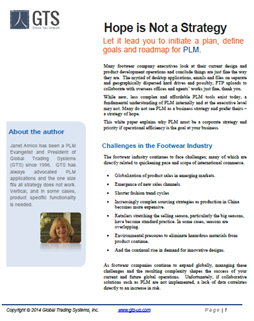What is Product Lifecycle Management (PLM)?
PLM is a strategic business approach for managing the company’s products from concept to end of life. It consists of a set of business processes and IT solutions that integrate people in a collaborative environment for the creation, dissemination and use of product data. Ideally, it should support the extended enterprise including customers, outsourced designers and supply partners.
What is the function of PLM applications in the apparel, footwear & accessories businesses?
- Manage product lines, design data, attributes and associated images/ documents
- Manage the sampling process from initial prototype to sales samples
- Manage RFQ’s, FOB costs, estimated landed and retail prices and projected margins.
- Construct and control a specification from design concept to bill of material including changes in post-production.
- Provide an electronic data and image/ file repository
- Include built-in and industry tailored components, materials, construction and other product specific sizing, custom part and document metadata (“attributes”)
- Identify materials content for environmental compliance
- Permit item-focused task assignments, where needed
- Provide process management for approving changes, where needed
- Provide multi-user and defined control for multi-user secured access
- Export data for downstream ERP systems
- Manage production status
What are the goals of implementing a PLM application?
To increase product revenues, reduce product-related costs and time to market, as well as maximize the value of the product lines, styles and SKUs.
Taken altogether this should increase margin and improve your ability to respond to changing markets, letting you take advantage when opportunity knocks.
 Do we need a PLM application and what are the risks?
Do we need a PLM application and what are the risks?
Simply put, yes. The challenge is implementing a solution is to ensure you are addressing your unique challenges and do not overwhelming your staff and operations.
GTS’ President, Janet Amico, has written a white paper on this very subject. Please click on the graphics to the right and download this informative paper.
